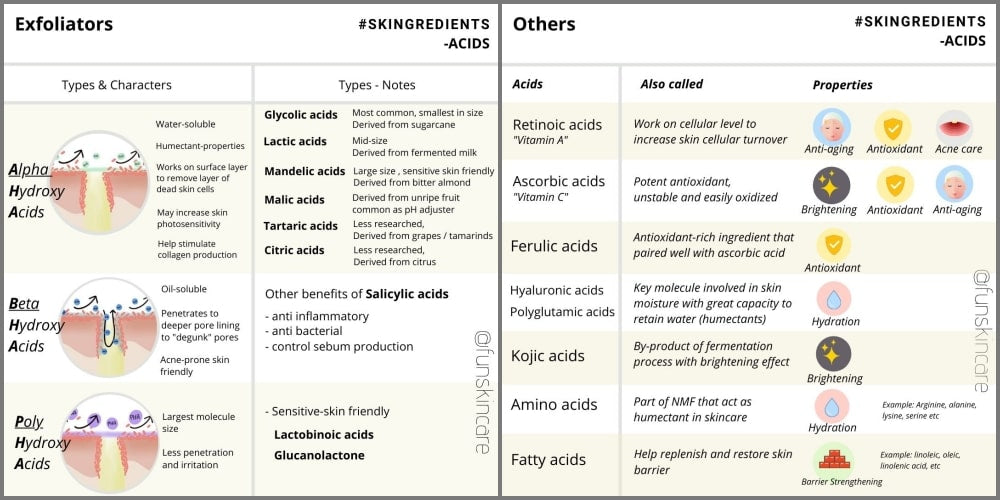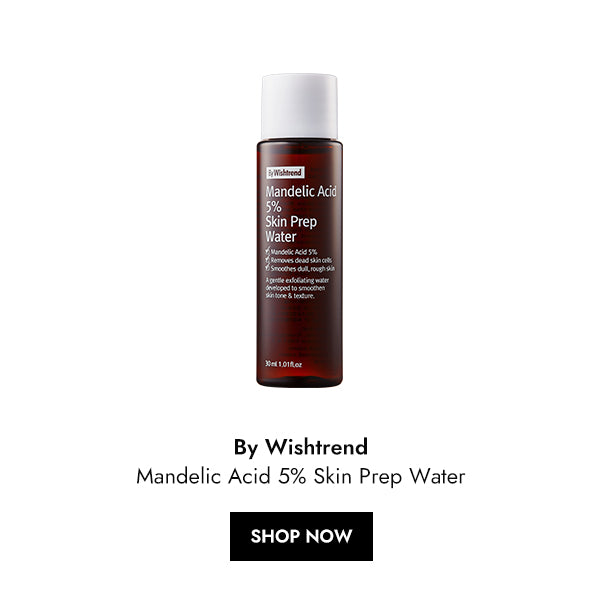Acid Skincare Ingredients 101: Acid Cheat Sheet in Skincare
by Claudia Christin on Aug 19, 2020
Learn acid skincare ingredients by types & characters

1. Ascorbic acid

2. Ferulic acid

3. Azelaic acid
4. Kojic acid
5. Hyaluronic acids

6. Polyglutamic acids
7. Alpha hydroxy acids

8. Beta hydroxy acids

9. Poly hydroxy acids

10. Retinoic acids
11. Fatty acids
12. Amino acids
Which acid is best for you depending on your skin concern?
 After getting to know different types of acids, it is time to decide on which one to pick based on your skin concern. Whatever your skin concern is, there are multiple options that you can choose from. Make sure to start slowly into your acid game and pick wisely! Your skin going to thank you ☺
After getting to know different types of acids, it is time to decide on which one to pick based on your skin concern. Whatever your skin concern is, there are multiple options that you can choose from. Make sure to start slowly into your acid game and pick wisely! Your skin going to thank you ☺












